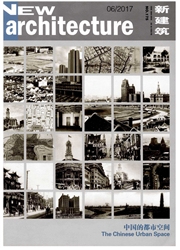

 中文摘要:
中文摘要:
文章对近年来涌现的以机器学习、虚拟现实、生理传感器、眼动追踪等为代表的新技术和以多源城市数据所代表的新数据进行了综述、分析与点评。作者认为这些新技术与新数据不仅在研究方法上提供了更精确分析和更直观展现的工具,而且提供了对现有研究范式革新的可能,从而让研究者更好地回应建筑、城市设计和景观领域的一个基本问题——人如何感知和使用空间,而物质空间环境又以何种程度、何种方式影响人的感知与行为?以此更好地与设计相衔接,助力人本视角的研究型设计发挥更大作用。
 英文摘要:
英文摘要:
This paper reviews the new research and design potentials accompanying emerging new analytical techniques, e.g., machine learning, virtual reality, physiological sensors, eye tracking, and new multi-sourced urban data. These new techniques and new data provides not only more efficient analyses and visualizations but also new research perspectives based on the existing paradigm of spatial perception and design. It helps to achieve an insightful understanding to answer a common question in the fields of architecture, urban design and landscape architecture: how people perceive and use space,and in turn how space affects human perception and behaviors? It would better connect design practice with researches, as a way to advance further development of research by design at human-scale viewpoint.
 同期刊论文项目
同期刊论文项目
 同项目期刊论文
同项目期刊论文
 期刊信息
期刊信息
